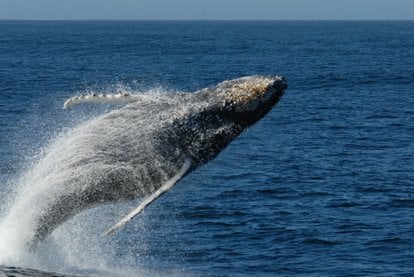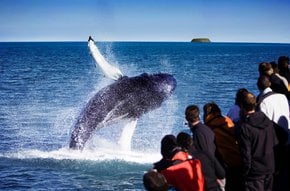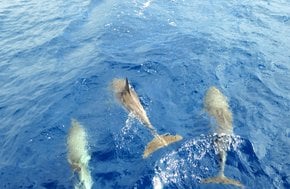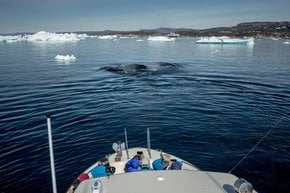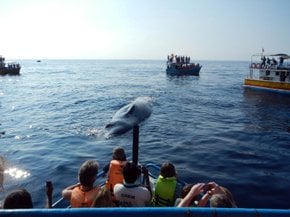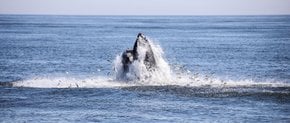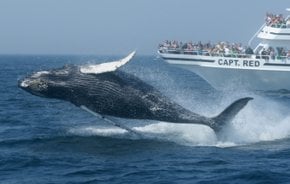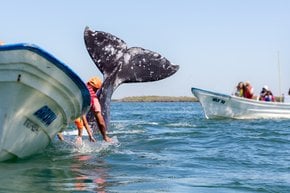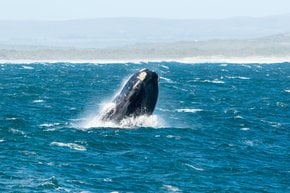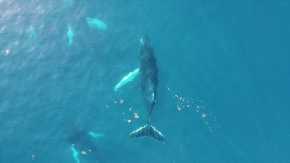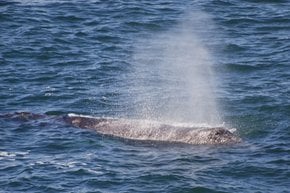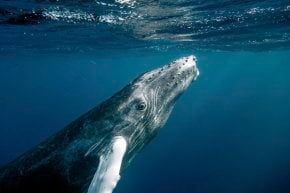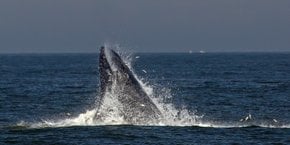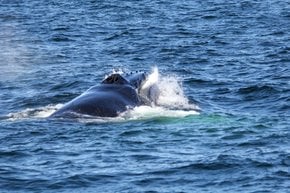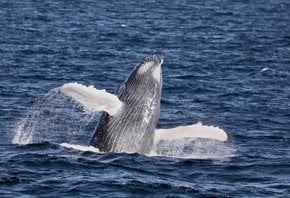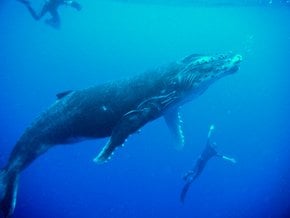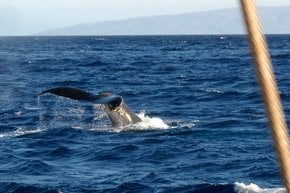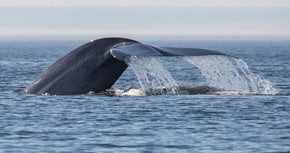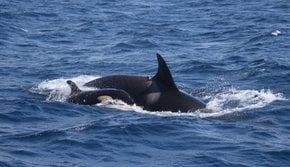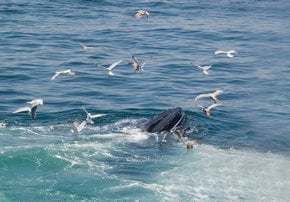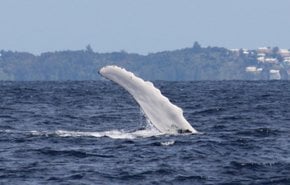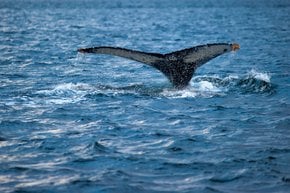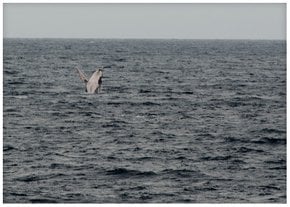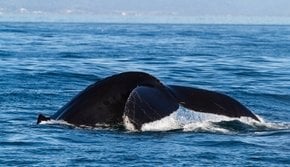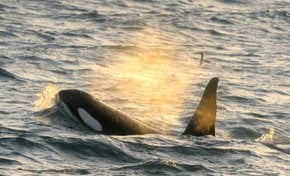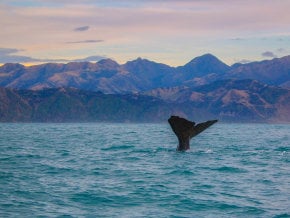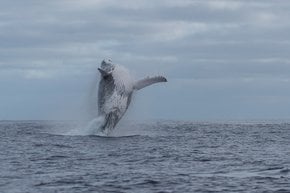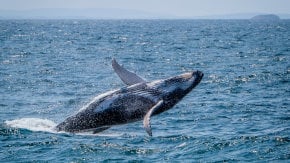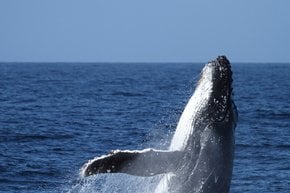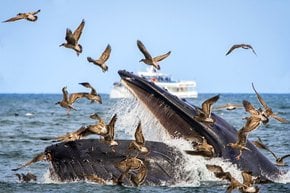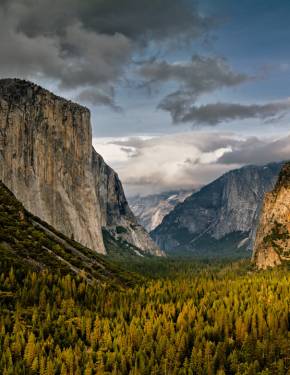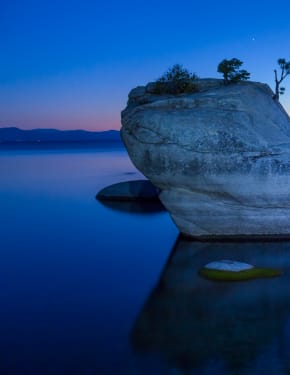Whale Watching in Monterey, CA 2024-2026
The nutrient-rich waters of Monterey Bay are always full of inhabitants
Best time: all year round (depends on whale species)
Monterey Bay is a feeding and migrating destination for various whale species all year long. But in the spring and summer months, the lagoons of Monterey Bay become especially busy.
Whale Watching Seasons in Monterey Bay
In Monterey Bay, whale watching is split into two seasons, along with selected pelagic seabird trips. Winter and early spring (January to March) offer sightings of gray whales, killer whales, and dolphins. Late spring, summer, and fall (April to December) are good for watching humpback whales, blue whales, and dolphins. Pelagic seabird trips are available on selected dates in the summer/fall season. Note that special group trips and private charter trips can be arranged during both seasons.
Humpback Whales
From April to November, humpback whales come here from the Mexican coast. Hundreds of them choose Monterey Bay waters because of the variety of food available. These whales are also the ones to entertain an audience and are considered the most playful among cetaceans. Depending on the year, humpback whales are in Monterey Bay from March through November. But in the summer months, the chances of meeting them increase.
Known for their dramatic surface behaviors, such as breaching and flipper or tail slapping, humpback whales occasionally show curiosity toward tour boats. Humpbacks are also famous for their intricate "songs," which can be heard in tropical breeding grounds. Their blow or the splash of a breach is visible from kilometers away, making them a standout species for whale watching globally.
Blue Whales
Blue whales got their name from the color they have when underwater. But in reality, their shade is bluish-grey. Weighing more than 200 tons and 98,4 ft (30 m) in length, blue whales are the largest animals known to have ever existed! In Monterey Bay, they appear from May through October to hunt for tiny shrimp-like snacks called krill. Visit Monterey Bay in July or August, and you will have a great chance to see these grand creatures.
Blue whales are sometimes seen swimming in small groups but are more commonly found alone or in pairs. While feeding and traveling, they typically move at around 5 miles per hour but can reach speeds of over 20 miles (32.2 km) per hour in short bursts. As one of the loudest animals on Earth, blue whales produce pulses, groans, and moans, and under the right ocean conditions, their calls can be heard by other whales up to 1,000 miles (1609.3 km) away.
Gray Whales
Gray whales have a specific color and a rough embossed surface. So, it's impossible to confuse them with any other mammals. Each year, they travel for over 10,000 mi (16093 km) from Alaska to the Mexican shore. But from December through mid-February, they are usually spotted in waters near Monterey Bay.
These large whales can grow up to 49 feet (14.9 m) in length and weigh around 90,000 pounds, with females being slightly larger than males. Gray whales have a mottled gray body and small eyes positioned just above the corners of their mouth. Their broad, paddle-shaped pectoral flippers are pointed at the tips. They earned the nickname "devil fish" due to their aggressive behavior when harpooned.
Killer Whales
Also known as orca whales, killer whales are the most unpredictable predators in the bay. Even though you can observe them here year-round—April, May, and June are considered to be the best months to witness these amazing creatures. Due to their characteristic black-and-white color, it is almost impossible not to notice them.
Killer whales are highly social animals, typically living in groups known as pods, which consist of maternally related individuals that stay together more than half the time. These pods usually contain anywhere from a few individuals to over 20, though larger groups may temporarily gather for social interactions, mating, or when prey is abundant. Killer whales use underwater sounds for feeding, communication, and navigation. Pod members communicate with each other through a variety of sounds, including clicks, whistles, and pulsed calls.
Whale Watching Tours in Monterey Bay
Companies like Monterey Bay Whale Watch Centre, Stagnaro Charters, Princess Monterey, or Blue Ocean Whale Watch offer short-glimpse trips and detailed four-hour journeys. Usually, each company conducts two or three tours per day: early in the morning and at lunchtime. Some of them include a professional marine biologist onboard. In addition to whales, Monterey Bay's wildlife is full of dolphins, seals, sea otters, and sea lions.
More About Monterey Bay
Monterey Bay National Marine Sanctuary, one of the nation's most stunning marine protected areas, is renowned for offering exceptional wildlife viewing. Often called the "Serengeti of the Sea," it spans the central coast from San Francisco to Cambria, California. The sanctuary features pristine beaches, vibrant tide pools, lush kelp forests, steep underwater canyons, and an offshore seamount brimming with life—from tiny shrimp to massive blue whales.

